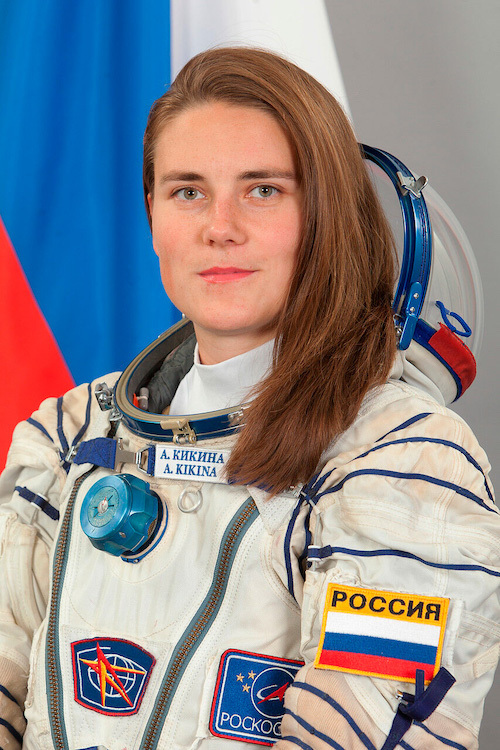10.12.2021
Roscosmos: Anna Kikina may be Russia’s first cosmonaut on US Crew Dragon in 2022
At the end of October Roscosmos CEO Dmitry Rogozin said the Crew Dragon spacecraft from Elon Musk’s SpaceX company had been tested well enough for allowing Russian cosmonauts to use them under a flight exchange program

The sole woman in the team of Russian cosmonauts, Anna Kikina, will go on her first space mission in 2022, and the odds are she may fly aboard the United States’ Crew Dragon, Roscosmos CEO Dmitry Rogozin said on Wednesday.
"Our cosmonaut Anna Kikina will presumably go on a space mission in 2022. We believe that she may take a seat aboard the US spacecraft, while we in turn will put a US astronaut in space by our Soyuz under an exchange program," Rogozin said.
He hopes that Kikina will be successful as a goodwill ambassador, too.
"Our charming space lady will have the honor to inaugurate our space exchange flights program," he remarked.
At the end of October Rogozin said the Crew Dragon spacecraft from Elon Musk’s SpaceX company had been tested well enough for allowing Russian cosmonauts to use them under a flight exchange program. Roscosmos’s executive director for crewed space programs Sergey Krikalyov later told TASS that Russian cosmonauts would start using Crew Dragons, and US astronauts, Russia’s Soyuz vehicles on flight swap terms no earlier than the autumn of 2022.
Quelle: TASS
----
Update: 22.12.2021
.
Russian cosmonaut Anna Kikina will fly on SpaceX's Crew-5 mission to the International Space Station

The official Roscosmos portrait of Anna Kikina, who will be the first Russian cosmonaut to fly on SpaceX's Crew Dragon. (Image credit: Roscosmos)
CAPE CANAVERAL, Fla. — NASA and the Russian space agency Roscosmos are finalizing an agreement to launch the first cosmonaut on a SpaceX Crew Dragon spacecraft, agency officials confirmed on Monday (Dec. 20).
Joel Montalbano, NASA's International Space Station (ISS) program manager, told reporters during a prelaunch briefing for the upcoming Dragon cargo resupply mission CRS-24 that the plan was to launch a cosmonaut on the SpaceX Crew-5 mission, launching in the fall of 2022.
"The plan is to fly a cosmonaut on the Crew-5 mission next fall and then launch a NASA astronaut on an upcoming Soyuz mission," Montalbano said. "The agency is currently finalizing those plans through government agreements."
Russian officials first made the announcement on Dec. 8; however, the two agencies have been trying to come to an agreement since the beginning of the Commercial Crew Program. According to Roscosmos, the cosmonaut selected is Anna Kikina, the only active female astronaut in Russia's cosmonaut corps.
The mission will be her first spaceflight, and according to Montalbano, a cosmonaut has already started training at the SpaceX facilities. (Montalbano did not confirm that it was in fact Kikina who would fly on the mission.)
As a member on the Crew-5 mission, Kikina would join NASA astronauts Nicole Mann and Josh Cassada, who were originally assigned to Boeing's first crewed mission. Mann and Cassada were recently reassigned to SpaceX and will join Japanese astronaut Koichi Wakata to round out a crew of four.
In exchange for her seat on the Dragon, Dmitry Rogozin, director-general of Roscosmos, has said that the Russian space agency pledged a seat of a Russian Soyuz capsule to an American astronaut in return.
This exchange of seats was NASA's hope once its commercial crew program ramped up. To date, SpaceX has launched four crewed missions to low Earth orbit for NASA, three of which were long-duration missions. (The other was a crewed test flight which proved that Crew Dragon could safely deliver astronauts to and from the space station.)
SpaceX was one of two companies selected by NASA to transport astronauts to low Earth orbit and back; Boeing is the other. The duo was selected in 2014, with SpaceX being the sole company to launch astronauts thus far.
Boeing's Starliner spacecraft first flew on an uncrewed mission two years ago but was unable to reach the ISS due to multiple software anomalies. Working together with NASA, the company spent 18 months going through the spacecraft's software and various systems to ensure that any issues were resolved and it was ready to fly.
However, while sitting on the launch pad leading up to its second uncrewed test flight, scheduled for Aug. 30, several valves within the spacecraft's propulsion system corroded and were stuck shut. Boeing tried to troubleshoot but was forced to ship the spacecraft back to the factory.
They have since determined that moisture interactions with the spacecraft's fuel caused the valves to stick shut. Engineers are working to resolve the issues and get the spacecraft ready to fly for its next launch attempt, which is scheduled for no earlier than May 2022.
Editor's note: This article was updated to clarify that SpaceX's Crew Dragon has flown four crewed missions to the space station for NASA. SpaceX also flew the private Inspiration4 mission on a Crew Dragon, but that flight did not dock with the space station.
Quelle: SC
